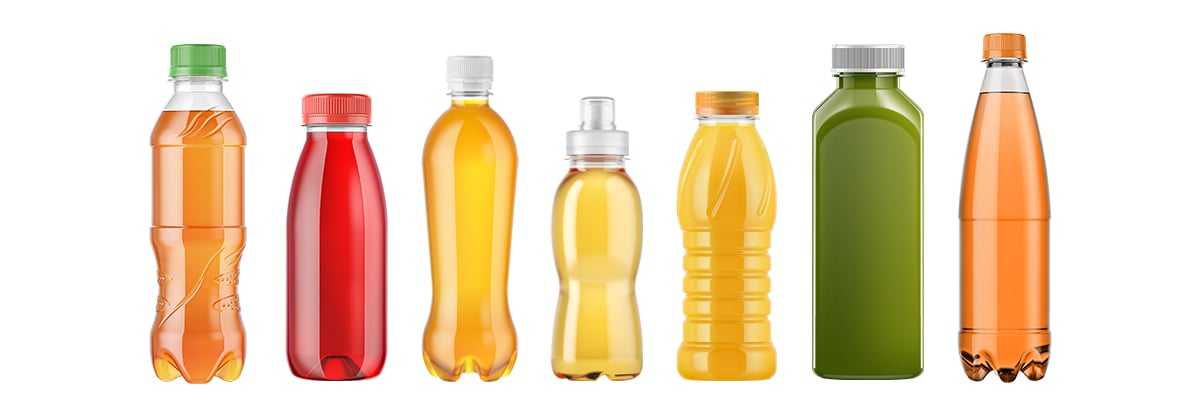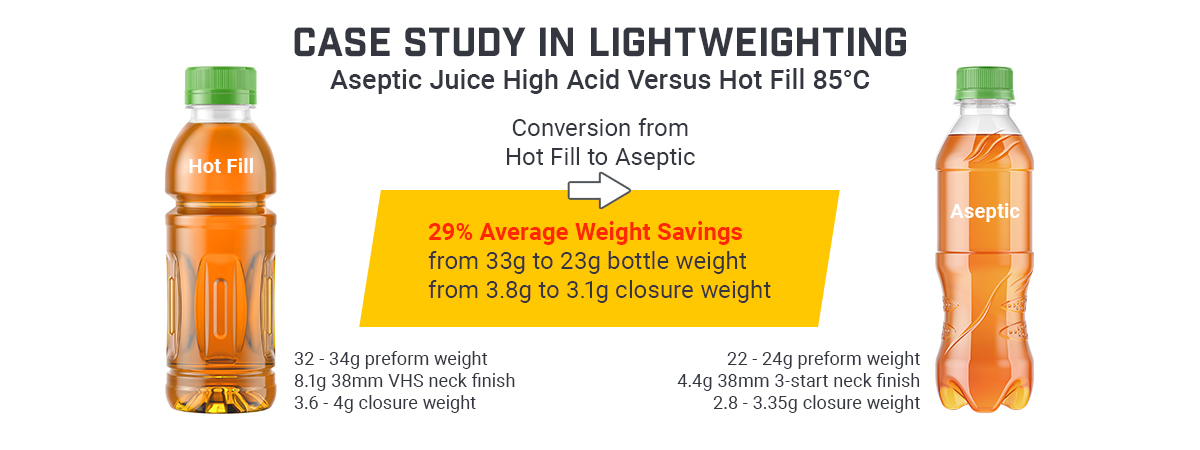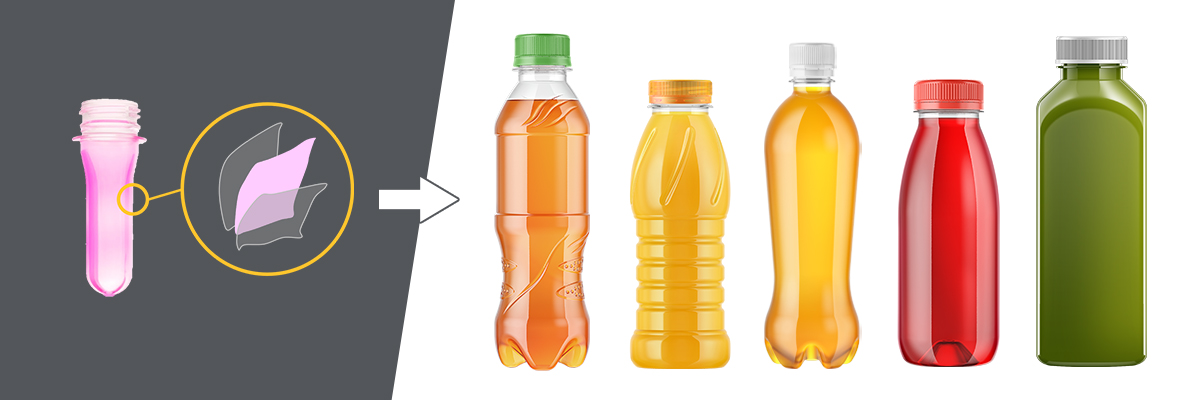How to Drive Profits with Sustainable Aseptic Packaging Solutions

Aseptic packaging has emerged as a popular solution for brands and producers, enabling many to meet consumer preferences towards sustainable packaging and increased health consciousness.
In this article, we'll take a closer look at the advantages of aseptic packaging processes and how you can leverage this solution to successfully drive profits.
Growth of the Aseptic Packaging Market
As the consumer landscape evolves, health-conscious preferences and a surge in demand for functional and better-for-you products continue to shape purchasing decisions. The rise of aseptic packaging is closely intertwined with these trends, as its flexibility and sustainable use of recycled materials make it an increasingly popular choice for producers looking to meet the dynamic needs of today's consumers.
Fittingly, the aseptic packaging market is experiencing remarkable growth. The global aseptic packaging market is expected to reach a value of more than $70 billion (USD) in 2024 and grow at a CAGR of 10.47% to exceed $116 billion by 2029.
As consumer demand for healthier beverage alternatives continues to rise over the next decade, aseptic packaging is expected to capture an even larger market share globally, and particularly in North America.
Aseptic vs. Hot Fill
The decision between aseptic and hot fill methods is pivotal for manufacturers aiming to align with evolving consumer preferences.
Aseptic processes differ from hot fill methods in three major ways, providing:
Lightweight flexibility
To support the high temperature changes that take place during filling, hot fill packages must be molded with panels and ridges, which limits the degree of lightweighting that can be achieved, resulting in a heavier package. Aseptic processes, on the other hand, do not require such high temperatures, thereby enabling a lighter package, with little to no design constraints That translates to instant cost savings on resin. This combination of design flexibility and lightweighting is paramount in a competitive, shelf-space constrained beverage market, where lighter weights enable reduced material costs.
Superior nutrient preservation
While effectively sterilizing products, the high temperatures necessary during hot fill processes inadvertently deplete essential vitamins and nutrients. Aseptic packaging stands out by preserving the inherent nutritional richness of products.
100% rPET usage
The high temperature changes of the hot fill method also limits the percentage of rPET material that packaging can contain, thereby limiting the sustainability and circularity of packaging produced using this method. Alternatively, aseptic packaging enables the use of up to 100% rPET material.

In this real world conversion from the hot fill method to aseptic packaging, the aseptic process enabled a lighter package, resulting in 29% in overall weight savings.
The Benefits of Aseptic Packaging
In addition to lightweighting, recyclability and nutrient preservation, aseptic packaging offers several other benefits for brands and producers, including:
Improved shelf stability:
Aseptic packaging’s primary application is in the realm of 'sensitive' beverages, including juices, teas, and sports drinks. This is due to its ability to maintain product safety and preservation at ambient temperatures, which is crucial for these types of products.
Elevated food quality:
In aseptic packaging, contents are sterilized separately from the packaging or container, which is itself also sterilized. This process ensures consistent quality from the moment a package’s contents are packed until reaching their final destination. By sealing and sterilizing without refrigeration, aseptic packaging can also help meet market trends for simpler ingredient lists and less artificial additives.
Enhanced consumer experience:
Aseptic packaging’s design flexibility creates opportunities for packaging design and manufacturing optimization, enabling costs and operations to be streamlined while also enhancing the consumer experience. Transitioning from a 38mm to a 32mm thread, for example, would not impact what is referred to as a beverage’s “gulp factor,” ensuring a seamless transition while optimizing packaging efficiency. Many leading brands are also leveraging aseptic packaging to standardize neck sizes, improving customer interaction while streamlining production and costs.
Considerations for Success With Aseptic Packaging
While the advantages of aseptic packaging processes are clear, they do require a strategic evaluation and focus on operational efficiency, material selection, and total cost of ownership.
Brands and producers that are succeeding with aseptic packaging have prioritized increasing uptime, reducing changeover times, and meticulously controlling material consumption. The vast majority are shifting towards sustainable materials and processes that promote circularity.
PET has emerged as a material of choice because of its flexibility, sustainability, and recyclability. The lightweight nature of PET packaging also means that producers can use less material per package to reduce costs and enable a lower carbon footprint when transporting packaging.
Husky's PET Injection Molding Solutions
Husky's diverse solutions offer a range of benefits that are enabling brands and producers to succeed with aseptic packaging, regardless of production volume.
Preform optimization capabilities
Leveraging 70 years of packaging design expertise and development experience, Husky enables producers to unlock the true value of their products. Looking closely at requirements of functionality, package weight, lightweighting, shelf life, user experience, and target costs, Husky works with producers to ensure preform designs are optimized for sustainability and running at the fastest cycle times while achieving 6-sigma quality.
Multi-Layer technology
While there are clear benefits to producing aseptic packaging using both mono-layer and multi-layer injection methods, Husky’s Multi-Layer technology enables additional enhancements by optimizing functional barriers and additives.
By employing a functional barrier component sandwiched between two PET layers, this enhanced barrier capability keeps products safe and fresh longer. This technology offers unmatched freedom in selecting the amount, thickness, and placement of the functional material, enabling aseptic packaging with tailored aesthetics and superior performance.
At maximum capacity, a 72-cavity Husky HyPET HPP5e Multi-Layer system can produce 27,000 preforms per hour, translating to more than 200 million annually. Husky’s HyPET HPP5e Multi-Layer system is available in various sizes, providing an annual production capacity ranging from 55 million to 350 million preforms per year.

Co-injection can be used to produce Multi-Layer preforms in which a functional layer, typically with barrier properties, is sandwiched between two PET layers.
Realtime proactive monitoring
Husky's Advantage+Elite™ provides real-time, proactive, remote monitoring of systems, enabling producers to anticipate, identify, and resolve potential issues before they affect productivity or part quality.
Dashboards provide a data-driven health score for each system, triggering notifications to address potential concerns. In the case of critical issues, immediate customer notification and support are initiated to prevent part failure. This proactive, predictive and transparent approach ensures that operations run as efficiently as possible, contributing to the lowest total cost of production.
A holistic approach
A good partner is crucial when it comes to running a successful molding operation. As an experienced partner, Husky provides:
- The expertise to deliver a complete holistic solution from concept to completion
- The experience and ability to configure the most appropriate system for any application requirements
- Part development and produce expertise
- Proven and reliable equipment to deliver high productivity, low part cost and a wide processing window
- Streamlined system operation with easy-to use, intuitive features
- Engaged service and support to avoid unplanned downtime, prevent expensive repairs and keep manufacturing operations on schedule
Reach out to our experts to learn more about how we can enable your success with sustainable aseptic packaging solutions.